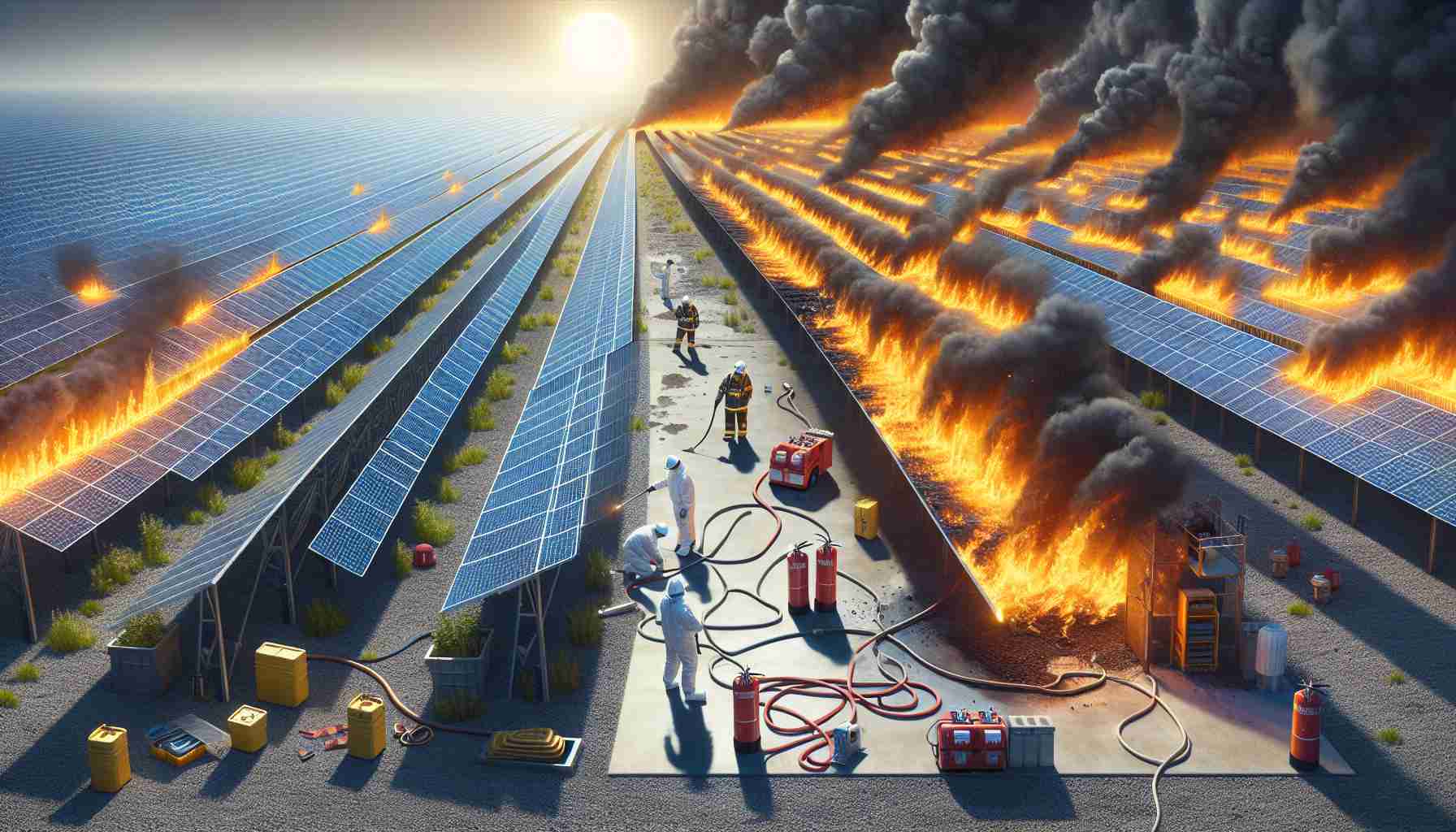
Understanding the Risks in Solar Energy
As the solar photovoltaic (PV) industry continues its remarkable growth, an increasingly troubling concern arises: safety. While solar energy provides a vital alternative to fossil fuels, incidents related to PV fires have emerged, highlighting a need for enhanced safety protocols.
Recent major calamities, including a July 2023 fire in Switzerland that destroyed an industrial complex housing PV systems, and an August blaze in Italy at a poultry farm that resulted in the loss of over 20,000 hens, exemplify the urgent need for improved safety measures. Additionally, a fire in February 2024 in the UK inflicted damages worth £70 million on a warehouse. These events not only lead to significant financial losses but also raise alarms within local communities about future solar developments.
One of the most concerning issues is the remaining high-voltage energy present in photovoltaic systems even after shutdown, posing a substantial risk to first responders. This complication has sparked numerous discussions online, where misinformation about fire safety and solar panels has proliferated.
To combat these hazards, global standards are evolving, with new regulations like the US National Electrical Code (NEC) mandating immediate voltage reductions. In tandem, Sungrow’s SR20D-M Rapid Shutdown Equipment has emerged as a crucial innovation. This device can safely reduce high voltages to below 30V within 20 seconds during emergencies, ensuring the safety of both property and personnel. As the transition to solar energy accelerates, prioritizing safety has become paramount in securing the future of clean power.
Solar Energy Safety: Innovations and Insights to Protect Communities
As the solar photovoltaic (PV) industry experiences exponential growth, the accompanying risks, particularly concerning safety standards, have become a pressing issue. As incidents such as PV-related fires escalate, the need for stringent safety measures and innovative technologies has never been more critical.
Current Trends in Solar Safety Regulations
Recent events, such as significant fires linked to solar facilities in Switzerland and Italy in mid-2023, have led to heightened concerns over the safety of solar installations. These incidents underscore the importance of up-to-date safety protocols in the burgeoning solar sector. To address these challenges, international standards and regulations are evolving rapidly, ensuring that solar energy is harnessed safely and effectively.
For instance, the US National Electrical Code (NEC) has started mandating more effective emergency shutdown mechanisms, establishing guidelines for voltage reduction that are vital for the safety of first responders. Understanding how to implement these standards is crucial for solar installation companies and operators, as they integrate these regulations into their systems.
Innovations Enhancing Solar Panel Safety
A game-changing development in the realm of solar safety is Sungrow’s SR20D-M Rapid Shutdown Equipment. This innovative solution is engineered to quickly reduce high voltages in PV systems to below 30V within 20 seconds during emergencies. By drastically lowering the risk of electric shock to firefighters and rescue personnel, these systems serve as a key enhancement to the safety infrastructure surrounding solar energy industries.
Pros and Cons of Solar Energy Safety Measures
Pros:
– Enhanced Safety: New technologies significantly reduce risks associated with high-voltage systems.
– Regulatory Compliance: Adhering to updated standards helps to avoid penalties and ensures community trust.
– Protection of First Responders: Innovations like rapid shutdown systems offer critical safety measures for emergency personnel.
Cons:
– Costs of Implementation: The investment required for new safety technology can be considerable for companies operating on thin margins.
– Continued Risks: Despite advancements, risks related to system failures or human error can still pose challenges.
– Misinformation: Ongoing public misconceptions about solar technology may hinder safety efforts and community acceptance.
Use Cases for Rapid Shutdown Technology
The deployment of rapid shutdown systems is especially significant in densely populated areas and those prone to natural disasters. Utilization of this technology ensures that, in the event of an emergency, a quick response can be effectively executed, mitigating both human risk and property damage.
Market Analysis and Future Predictions
As the solar energy sector expands, the market for safety technologies, such as shutdown systems, is projected to grow significantly. Given the rising frequency of PV-related incidents, companies that invest in advanced safety measures may find themselves at a competitive advantage, not only through compliance but also in market positioning as leaders in safe solar energy deployment.
Security Aspects and Sustainability Considerations
The integration of safety technologies not only safeguards lives but also contributes to the sustainability narrative of solar energy. Ensuring the security of installations enhances public perception and broadens acceptance of solar as a reliable energy source.
With safety advancements like Sungrow’s SR20D-M and evolving regulatory frameworks, the solar industry is better equipped to overcome challenges and secure a promising future in clean energy.
For more information on solar energy innovations and safety measures, visit Solar Example for the latest industry trends and developments.



